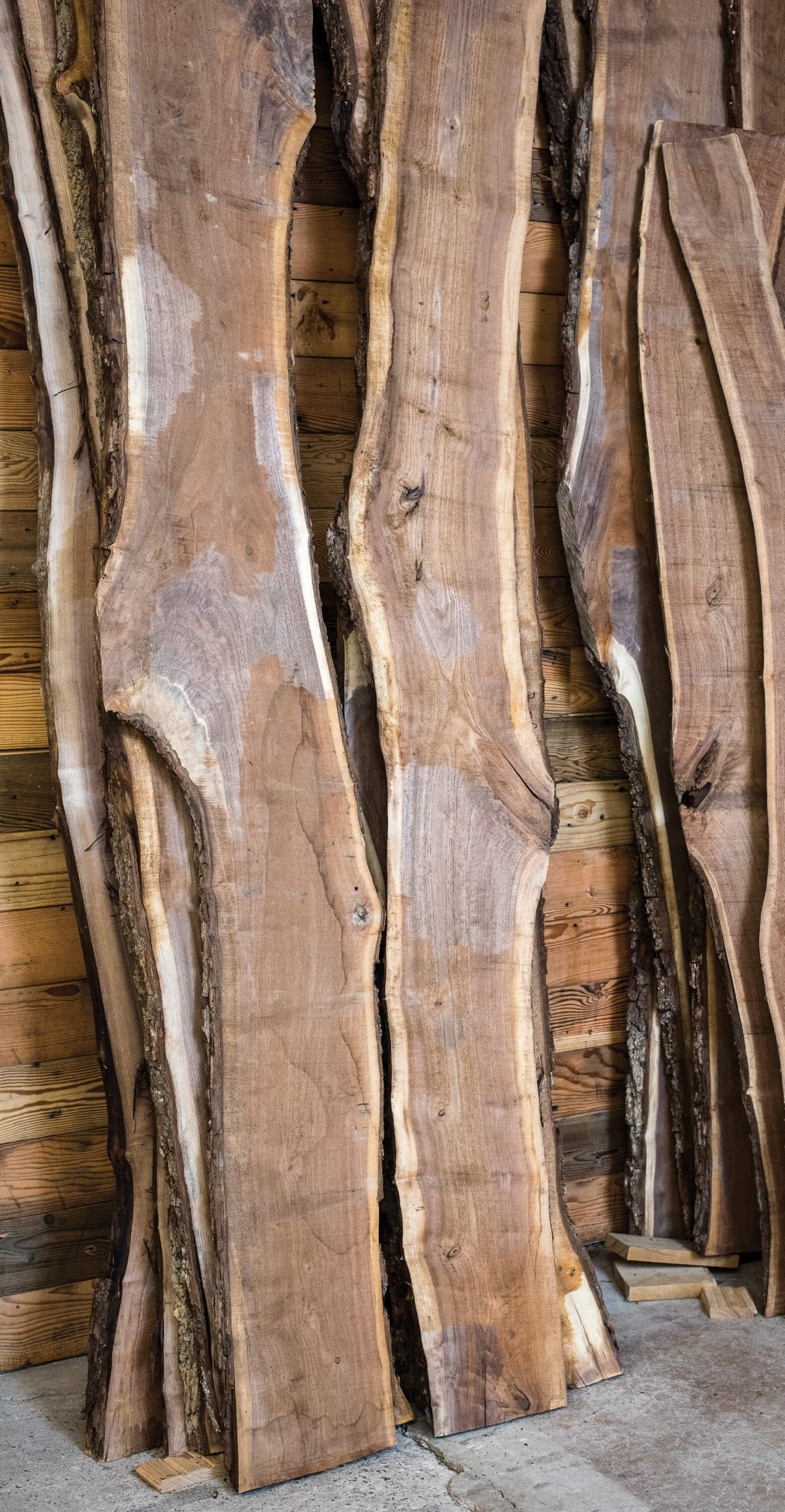
03 Apr LOCAL EXPERTISE: SUPERIOR HARDWOODS
“I’m a wood junkie,” says John Medlinger, founder and owner of Superior Hardwoods in Missoula, Montana. While he says it with a laugh, the statement is definitely not a joke. In fact, you’d be hard-pressed to find anyone who knows or cares more about wood than Medlinger. For him, wood is serious business, which is why you’ll find his products highlighted in the Yellowstone Club’s Warren Miller Lodge and The Ranch at Rock Creek, as well as in the homes of countless high-profile personalities and locals alike.
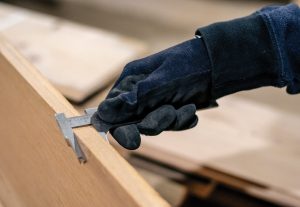
A mill worker at Superior Hardwoods in Missoula, Montana uses a wood caliper to get a precise thickness measurement on a board.
Now a Montana institution in the construction and design space, Superior Hardwoods was born some 1,500 miles from its current home. Medlinger first came to the state in 1971 to attend the University of Montana when Missoula “was a small town, and you wouldn’t see any lights if you drove down the Bitterroot Valley at night,” he remembers. “But the University of Montana was quite the party school back then, so we had a good time.”
Unfortunately, while Medlinger was enjoying college life, his father tragically died in an airplane crash. Soon after, he was back in Illinois, helping his mom for a couple of years. Little did he know that moving back to be with his mother would change his life forever.
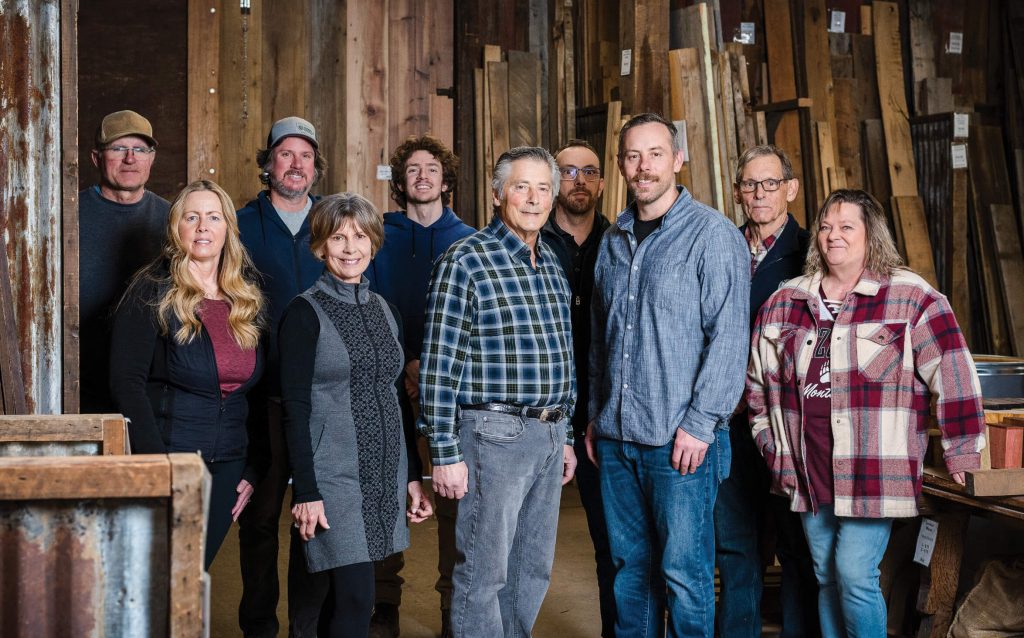
Superior Hardwoods employees, including founder John Medlinger (sixth from left) and his son and vice president Cory (third from right), pose for the camera in the company’s retail lumber room.
“My mother owned some property in the Upper Peninsula of Michigan, a couple miles from Lake Superior,” Medlinger explains. “She gave me permission to go log off a load of hardwood, predominantly maple and birch, and that was the beginning of Superior Hardwoods.”
After cutting down the trees himself, Medlinger had them processed and then shipped to Missoula, knowing that’s where he wanted to live and build his business. He started out with a small warehouse where he could make flooring and moldings, and a year later, he started buying wood from mills all over the country. Slowly, he built the business while raising three children, Ryan, Cory, and Alicia, with his wife, Jan, a fellow Midwesterner he’d met in Montana.
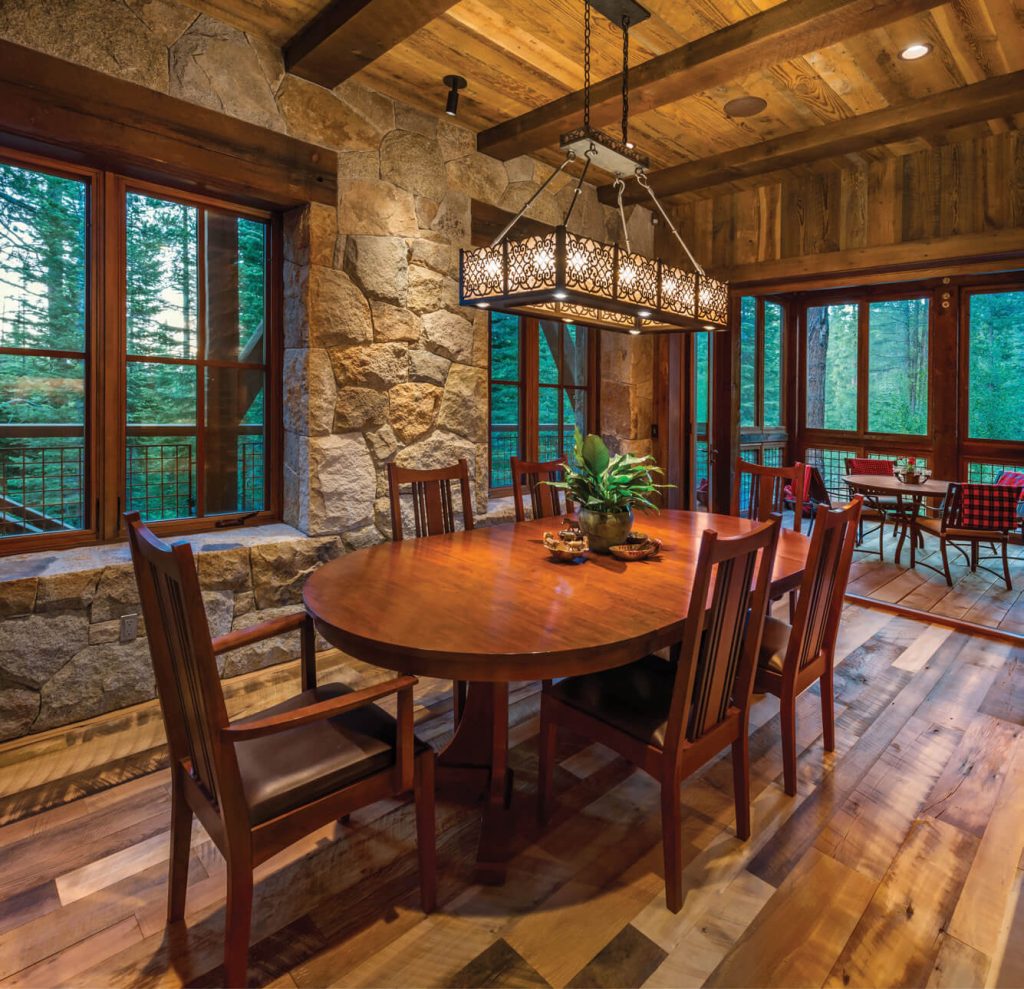
A mountain home in Tahoe features reclaimed fir paneling and historic mixed reclaimed-wood flooring from Superior Hardwoods. | PHOTO BY VANCE FOX
Fast forward to today, and Superior Hardwoods has a 48-year legacy, 11 acres of lumber, 100,000 square feet of flooring, and a 4,000-square-foot millwork shop where the team crafts building materials, including flooring, paneling, siding, beams, and antique and reclaimed lumber. The company has 10 employees; among them, Medlinger’s son Cory serves as the vice president and is a former carpenter experienced in all manners of woodworking and construction.
But Superior Hardwoods didn’t grow overnight. In fact, up until the early 1980s, the company experienced some lean years. “There wasn’t a lot of building going on here during that time,” explains Medlinger. “Montana was quiet; it wasn’t quite discovered yet.”
Things started to turn around in the late ’80s, when Medlinger bought his first shipment of reclaimed wood, lumber reused from an existing structure or product. “They were tearing down an old apple warehouse just south of us in Lolo, and we went in and bought all the old material,” he recalls. “After that, I got into contact with some folks on the West Coast in the salvage business and traveled to the Midwest to buy old barns that were being torn down.”
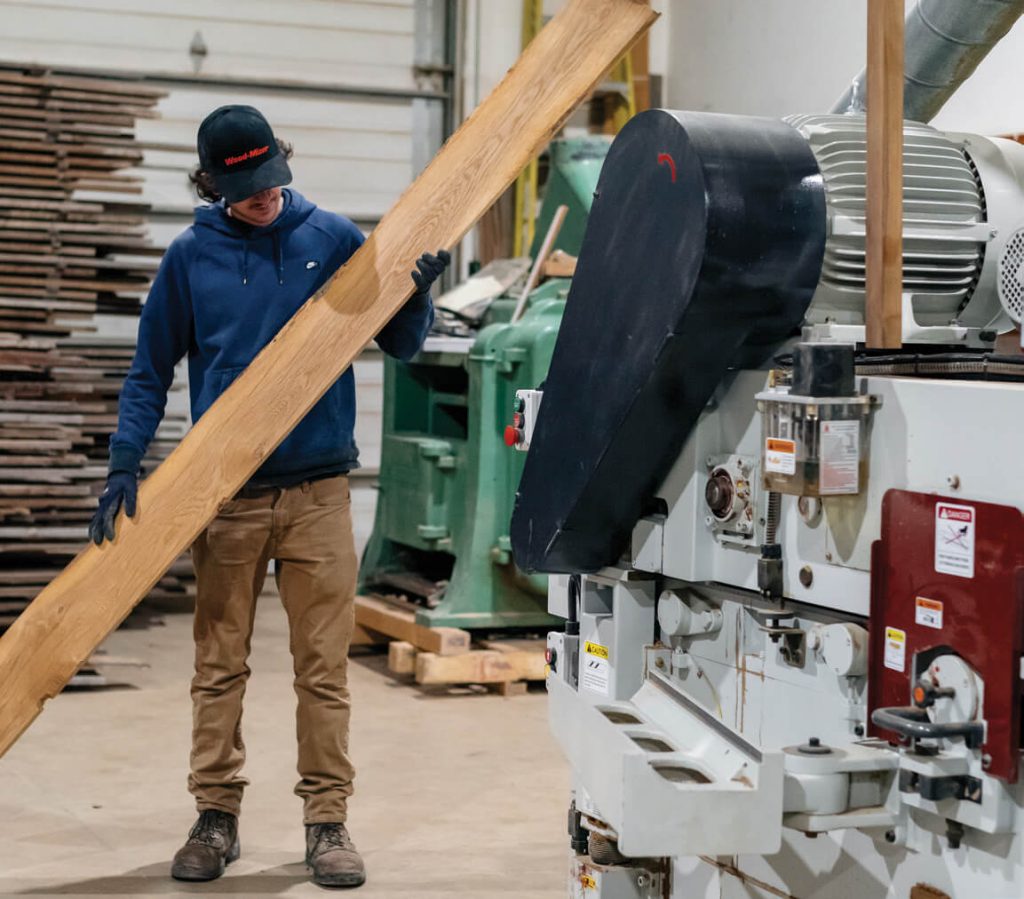
A mill crew member prepares an oak board using the facility’s wood planer.
Soon, Superior Hardwoods became one of the country’s leading reclaimed-lumber retailers, with their stockpile including material from old granaries in Idaho built in the 1930s, a mid-century mushroom factory in Pennsylvania, log cabins dating back to the 1700s, and giant “sinker logs” that were fished out of the bottom of the St. Lawrence River, where they had been lying in a watery grave since the 19th century.
Just like one-of-a-kind antiques, these wood pieces are sought after by builders and architects looking to create homes and buildings. “Age creates an amazing patina on the wood, so if I take a piece of oak that came out of a 100-year-old barn, all I have to do is give it a pass with a wire brush, and it’ll appear like it has a rich, dark stain,” Medlinger explains. “Designers want that age because that combination of color and texture creates the character that they’re after,” Cory adds.
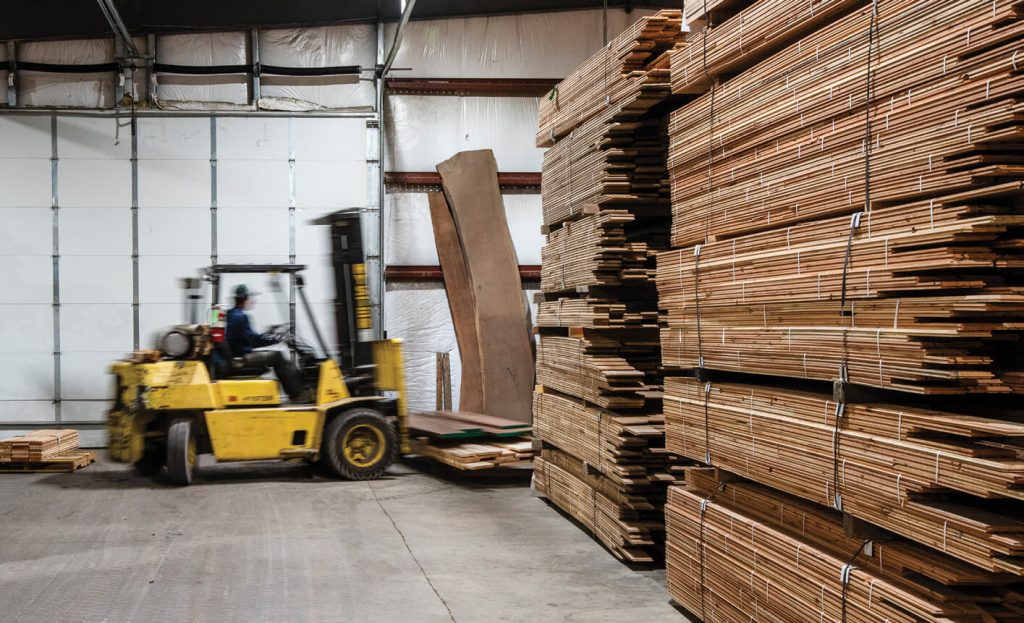
The company’s warehouse is filled with all types of wood, including stacks of remilled, reclaimed white-oak and fir flooring and giant slabs of walnut.
Not only does reclaimed wood have a unique look and feel, but using it has other benefits as well. “Of course, we thought it was a great idea to repurpose the materials and keep them out of landfills,” Medlinger says. “I’ve seen them demo buildings, and sometimes they just burn everything. I hate seeing beautiful wood go up in flames.”
Beyond recycling old material, the Medlingers are also conscious about where their new lumber comes from. “The lumber we buy from mills is crafted from trees that are selectively taken from private property,” Medlinger says. “I learned from the guy who helped me log my mother’s property all those years ago to treat the forest like a garden: Harvest with common sense, and you’ll continue to have healthy trees and a constant supply of lumber.”
The Medlingers’ diversified product catalog and sustainable approach positioned them perfectly for the building explosion that happened in the West during the 1990s. “At first, you saw growth in places like Jackson Hole, Vail, and Park City,” Medlinger notes. “Then, as those places became popular, people decided to come to Montana to investigate, and now look at Big Sky compared to what it used to look like.”
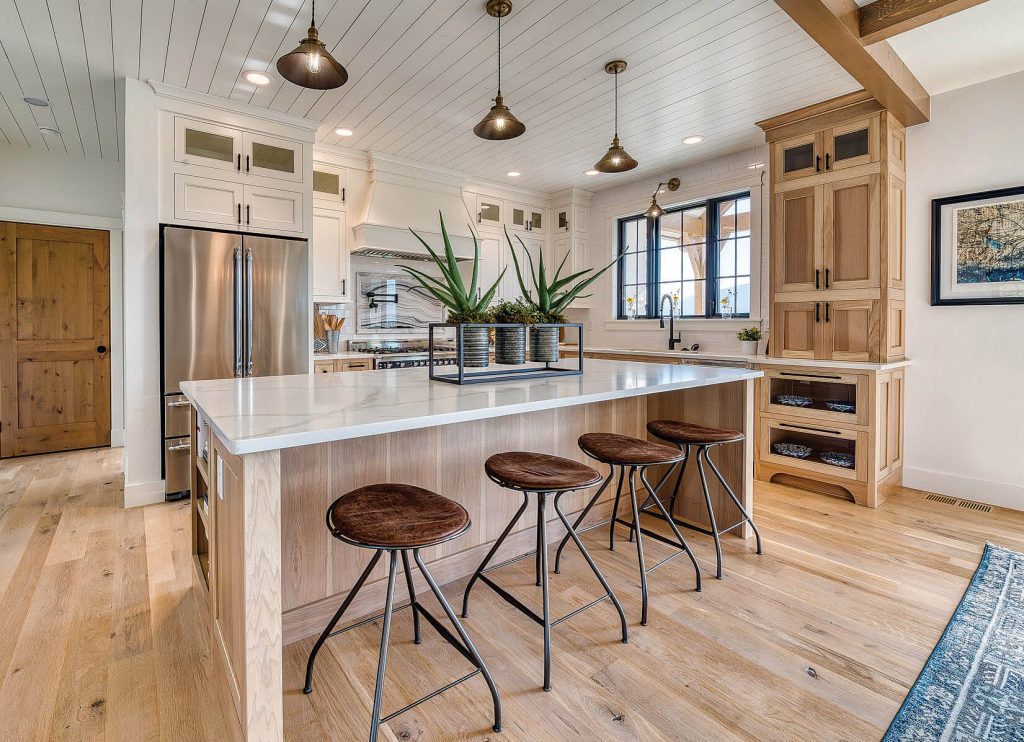
White-oak flooring from Superior Hardwoods anchors the modern country design of a kitchen in Montana’s Bitterroot Valley. | PHOTO BY SUPERIOR HARDWOODS
Superior Hardwoods was well-poised to meet the needs of architects who embraced the look of the West. Designers were taking their cues from trees on the natural landscape and the wood construction that’s a hallmark of the region’s national park lodges, log cabins, and historic ranch buildings. But, as the business took off, disaster struck the company in 1995, when a fire consumed their entire warehouse and threatened to put them out of business.
“The day before the Fourth of July, some kids were playing with fireworks, and we lost everything — our wood and all our equipment,” Medlinger recalls. “We spent the next five years battling the insurance company, but I knew I couldn’t give up because I had a young family to support.” Slowly, with the help of a friend who lent Medlinger an office, they were able to rebuild the company, taking on a small warehouse not unlike the one the business was born in nearly 20 years before.
Today, in a similar fashion to the burgeoning reclaimed-lumber scene of the 1980s, the wood world is seeing an emergence of new lumber types that are captivating builders and woodworkers alike. So, Medlinger makes sure to stock them all.
“We also carry exotic materials like tiger wood, which is a South American product that has striking stripes, a grade-A fire rating, and is weather resistant,” Cory explains. “There’s also Ipe, a Brazilian hardwood with rich coloring and natural resistance to rot. Something new on the market is kiln-dried heat-treated lumber, which has an aged-like patina and is resistant to problems caused by heat and moisture.”
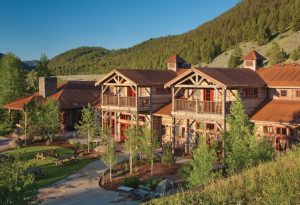
Superior Hardwoods’ products feature prominently at The Ranch at Rock Creek in Philipsburg, Montana, including on the lodge building’s exterior siding and decorative timbers. | PHOTO BY SUPERIOR HARDWOODS
Whether old or new, domestic or imported, the Medlingers don’t discriminate; to them, great wood is great wood. Their showroom is also open to the public, unlike those of many vendors, who only serve tradespeople or contractors. “People come in to buy 100 board feet or just one board that they need for a woodworking project,” Cory says. “It’s really cool that, year after year, we see walk-in traffic continue to grow.”
Cory would know: He has taken over the business’ day-to-day operations, carrying on the legacy of knowledge and service that has been the family business’ hallmark for nearly five decades.
As for Medlinger, he’s semi-retired, which means, while he may not be in the shop every day, as he puts it, “he’s still out finding the wood.” And he wouldn’t have it any other way.
An avid fly fisherman based in Bozeman, Montana, Stephen Camelio is a former editor for In Style magazine and has written for Fly Rod & Reel, The Drake, and Field & Stream, among others. He was a regular contributor to Yellowstone Quarterly, and he wrote the fishing chapter for the guidebook Yellowstone in a Day. Recently, Camelio wrote the fly-fishing feature film Mending the Line, which was the number-one film on Netflix the week it premiered.
Nick VanHorn left the hustle and bustle of Fort Collins, Colorado after college in search of wide-open spaces. Since landing in Montana, VanHorn has worn a variety of hats, from ski patroller to bike mechanic to broadcast television professional. Whatever the task, VanHorn can be found with a camera in-hand to document the journey.



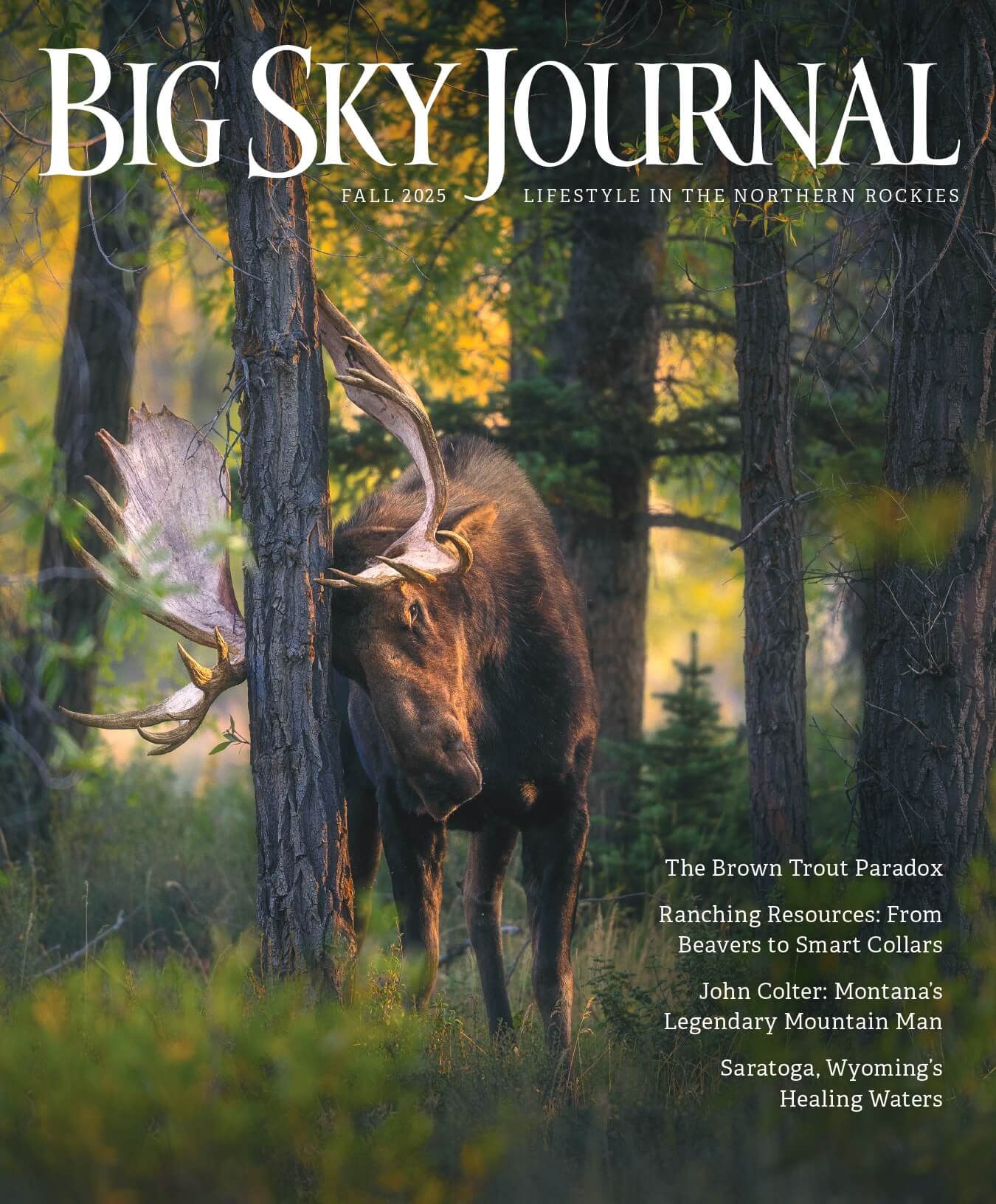
No Comments